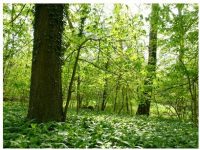
“Lv Ye Qian Chuan” Perceive Forestry
[ad_1]
Project Background
Looking at the more representative wireless sensor network systems in the world, it is not difficult to see that the scale and operating life of the current actual system are far from the original goals when the wireless sensor network was proposed. The sensor networks we once envisioned are all tens of thousands of points. Whether it is routing-oriented or boundary detection, the meaning of existence is a system under a huge scale; the simple and cruel fact is that, regardless of the real system, Even the demonstration system stays at the “hundred” level; the network survival time is so short that there is no advantage. In order to explore the root causes and solutions to the challenges of large-scale self-organizing networks, we launched the “Green Field Thousands of Legends” project.
Project Introduction
The system research and development work of Green Field Qianchuan began in the second half of 2008. The main tasks of the system include: On the one hand, “Lvye Qianchuan” is used to monitor the forest ecological environment throughout the year, collecting various data including temperature, humidity, light and carbon dioxide concentration through sensors. The collected information provides support for a variety of important applications, such as forest monitoring, forest observation and research, fire risk assessment, and field rescue. On the other hand, “Lvye Qianchuan” is a forward-looking study and exploration in the field of wireless sensor network research on the establishment of long-term large-scale wireless sensor network systems.
As of today, apart from the Hong Kong University of Science and Technology, the participating units and personnel include Professor Zhou Guomo from Zhejiang Agriculture and Forestry University, Professor Zhao Jizhong from Xi’an Jiaotong University, Professor Dai Guojun from Hangzhou Electronic Science and Technology University, Professor Li Xiangyang from IIT, Professor Gu Ming from Tsinghua University, and Professor Ma from Beijing University of Posts and Telecommunications. Professor Huadong, Professor Li Jianzhong of Harbin Institute of Technology, Professor Jiang Changjun of Tongji University, etc. In addition, this project has received direct or indirect guidance from experts from the National Natural Science Foundation of China, the Ministry of Science and Technology, and the State Forestry Administration. In May 2009, the project team successfully deployed a 120-node prototype system. By October 2009, the prototype system was expanded to 330 points, and it has been in operation for more than 11 months. In August 2009, the project team implemented a practical system with more than 200 nodes in the Tianmu Mountains of Zhejiang Province. The system has been in continuous operation for more than 8 months.
The project put forward three 1 resolutions, namely, deploy a wireless sensor network system with more than one thousand nodes in a real environment in the wild, and operate continuously for more than one year.
Project significance
Choosing forestry as the application background, on the one hand, forestry occupies an important position in sustainable development strategies, occupies a primary position in ecological construction, and is also of great significance in the development of the western region. It is a strategic choice in responding to global climate change. On September 8, 2007, President Hu Jintao presented the “Forest Plan” at the APEC informal meeting in Sydney, emphasizing forest restoration and growth, increasing carbon sinks, and mitigating climate change; September 22, 2009 at the G20 Climate Change Summit in New York On the previous page, he proposed to use “forest carbon sinks” to mitigate climate change-the development of forestry is a strategic choice to deal with global climate change.

On the other hand, forestry applications are carried out in the context of a complex system of forests. There are many forest species, types, vast distribution areas, and long growth cycles. Forestry applications require synchronization and continuity in time and a wide range in space. There are many measuring points, and it is also required to maintain low manpower and equipment costs; the existing technologies and methods of forestry are difficult to meet the above conditions, and encounter the bottleneck of the difficulty of accurately describing the structure and function of the system. Take carbon sinks as an example. Everyone knows that forests can sequester carbon, but what kind of forest can sequester carbon dioxide is a rough estimate, and it cannot be regarded as a very accurate measurement worldwide. Therefore, it is imperative to explore new technologies and methods. The wireless sensor network has many characteristics such as low power consumption, intelligent self-organization, large-scale continuous synchronous monitoring, and low cost. It is an effective and feasible solution to the bottleneck of forestry applications.
The combination of wireless sensor network and forestry applications, forestry gives wireless sensor network technology a strong enough application driving force, and the advanced technology of wireless sensor network can bring changes to forestry disciplines at the level of research methods and ways of thinking. Based on these two considerations, we chose forestry as our focus.
Project harvest
Through more than a year of observation and analysis of a large amount of sensor network data collected by the system, we have a little understanding of the fundamental challenges facing wireless sensor networks in breaking through large-scale application barriers. We summarize it into 3 main areas.
First of all, the two major functions of wireless sensor network transmission and perception do not match. Mainly manifested in two forms: On the one hand, image, sound, video and other data can be directly obtained by the corresponding image and sound sensors, but this type of data is large in volume and often requires real-time transmission, and it must be transmitted through wireless multi-hop with very limited bandwidth. Network transmission is very difficult. On the other hand, different applications require a variety of sensor data. For example, in forestry applications, carbon dioxide content and spectral data have a wide range of uses, and seismic wave intensity data is of great significance in disaster prevention and mitigation. This type of data is small and easy to transmit, but the real problem is that low-cost sensors that can provide these data and are suitable for large-scale deployment are not yet mature. To put it bluntly: it is easy to be susceptible and not easy to pass on, and easy to pass on is not easy to feel. This fundamental contradiction directly leads to the inability of wireless sensor networks to meet the sensing needs of real applications. To solve this contradiction, there are several key issues that need to be studied, including designing high-performance low-power sensors to break through network transmission bandwidth bottlenecks, designing and optimizing routing protocols to improve reliability and network throughput, as well as multi-modal data fusion and non-determinism Data processing, heterogeneous sensor network architecture and data management, etc. We call this barrier “sensing detuning.”
Second, there are difficulties in network management. Compared with traditional enterprise networks and Internet nodes where most nodes are indoors, wireless sensor nodes are often in harsh environments, with wind and sun, snow and rain. At the same time, the communication and computing resources of sensor nodes are extremely limited, and the agent reporting mechanism similar to SNMP on traditional networks cannot be effectively supported. What’s more serious is that even if the traditional network is broken, it is easier to judge whether it is physically broken, or is still physically connected but the software or system is faulty; and in the sensor network, it is broken when it is broken. It is difficult to find the root cause of the problem, which brings great trouble to the repair. We call this difficulty “unfounded diagnosis”.
Third, most of the existing research work is based on idealized model assumptions, such as UDG or quasi-UDG models, ignoring various uncertain physical factors and possible environmental dynamics that accompany the operation of wireless sensor networks. For example, positioning algorithms are mostly based on regular signal strength to physical distance mapping models. Many coverage algorithm designs use isotropic deterministic perception models. Topology control makes many assumptions about the transmission radius and its controllability. The existence of upper-connected topological edges depends on the definition of the link evaluation method. The resulting research results are not obvious when the system is small. Once the system is large, it immediately shows a huge contrast and cannot be directly applied to guidance and simulation practical systems. We call it “model depravity”.
[ad_2]




